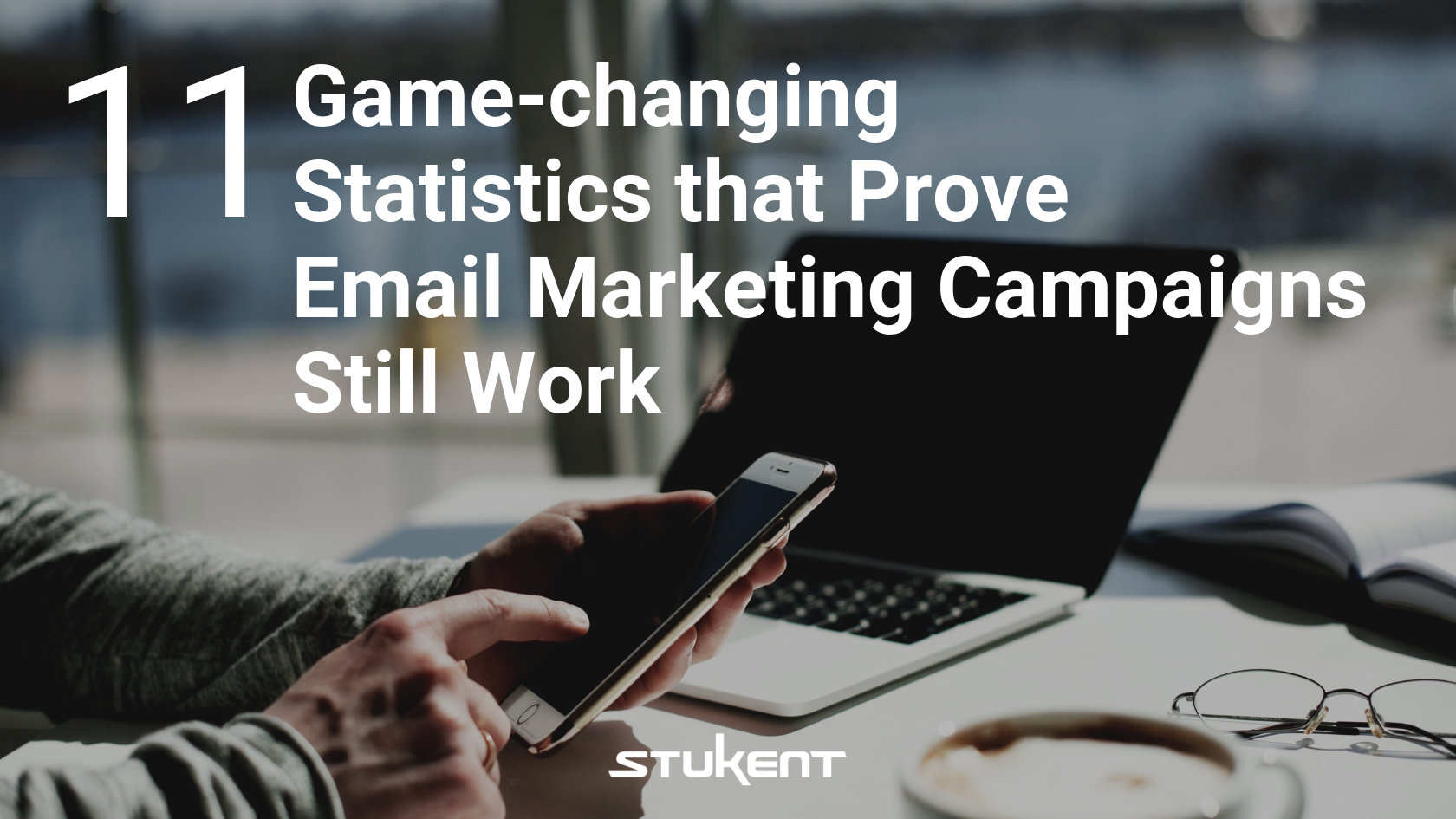Why target customers with email marketing campaigns?
It’s plain and simple. People. Use. Email. A 2018 study found that “about 3 in 5 consumers check their email on the go (mobile) and 75% of consumers say they use their smartphones most often to check email.”
Email Monday provides a helpful visual:
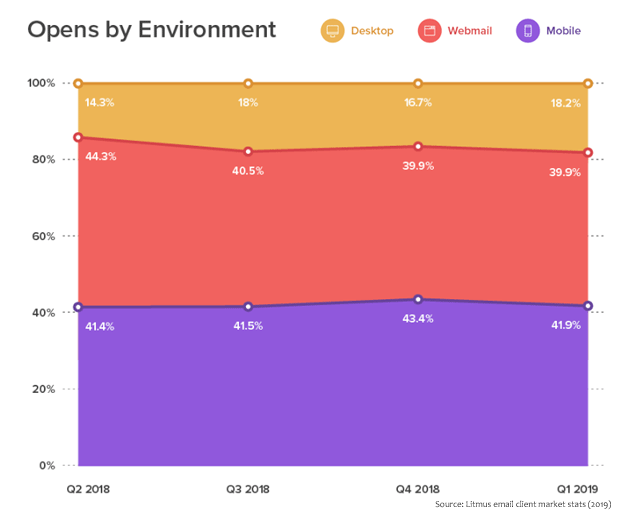
In a technological world, there are endless avenues and opportunities for marketing. Each opportunity, including the email marketing campaign, provides unique benefits.
Email marketing campaigns are a series of emails sent out from a company. These can be sent to anyone in the customer lifecycle (leads, opportunities, current customers, etc.)
Email was invented long before the internet we know today. According to The Guardian, “The very first version of what would become known as email was invented in 1965 at Massachusetts Institute of Technology (MIT) as part of the university’s Compatible Time-Sharing System, which allowed users to share files and messages on a central disk, logging in from remote terminals.”
Keep reading to find out how an email marketing campaign can boost your marketing efforts!
Game-Changing Email Marketing Statistics
With the influx of social media marketing popularity, email marketing seems to have gotten a bad rap. But, these 11 email marketing statistics prove that email marketing campaigns are definitely still doing their job.
Check out these email marketing statistics to find out why email marketing is alive and well!
- Every $1 spent on email marketing generates $38. – Hubspot
- Email campaigns are six times more likely than a tweet to result in a click-through. – Campaign Monitor
- 83 percent of B2B companies use e-newsletters for content marketing. – Hubspot
- 61 percent of customers prefer being contacted through email by brands. – Statista
- There are expected to be 5.6 billion active email accounts by 2019. – Hubspot
- The average email open rate for mobile and tablet is 42.83 percent. – Constant Contact
- The average email open rate for desktop is 57.17 percent. – Constant Contact
- 23 percent of viewers who open an email on a mobile device open it again. – Campaign Monitor
- 99 percent of consumers check their emails daily. – Hubspot
- Marketers who segment their email marketing campaigns see up to a 760 percent increase in revenue. – Hubspot
- Emails sent by companies with 50 or more employees have the highest open rate at 22.1 percent. – Mailchimp

Average Open Rate for Email Marketing
According to Mailchimp and Hubspot, the average open rate for email marketing campaigns lies between 20 and 40 percent, depending upon the audience that is measured.
It is difficult to pin the exact average open rate for email marketing in general because each study encompasses a different number and demographic of people. Most studies capture an average open rate between 20 and 40 percent.
An open rate largely depends upon things like the subject of an email, when it was sent, and who received it. So, the open rate can change very easily for every email marketing campaign and for every email specifically.
You can easily determine the average open rate of your email marketing campaigns by dividing your total opens by emails delivered. Then you can see how your open rate compares to the industry average with Hubspot’s help.
Best Time to Send Marketing Emails
The best time to send marketing emails can vary depending upon your audience.
Different organizations will find that certain times work better than others. CoSchedule provides general guidelines for the best time to send marketing emails:
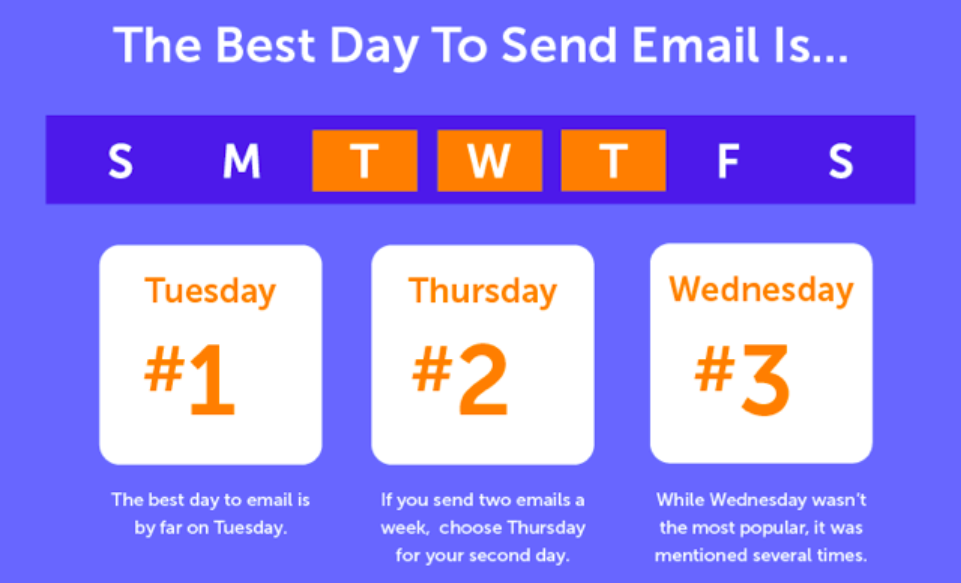
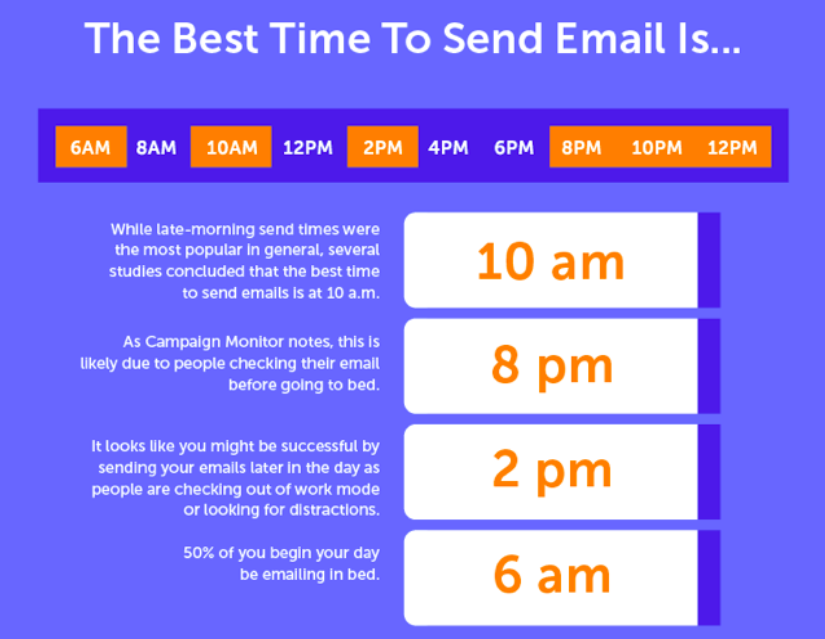
Don’t be afraid to try out different times. You might find that your audience prefers receiving emails at an entirely different time than you planned.
The best time to send marketing emails for one business can be entirely different for another.
The Benefits of Email Marketing
The benefits of email marketing are seemingly endless. But most importantly, the email marketing campaign is valuable because it allows companies to build relationships with their customers.
According to Hubspot, “Email isn’t dead. It’s one of the few marketing channels we can use to build an authentic connection with the humans that keep our businesses alive.”
Not to mention, email marketing campaigns provide a unique opportunity for businesses to personalize their messages, to call their customers by name and provide them with worthwhile information.
Building Connections Through Email Marketing Campaigns
One of the greatest benefits of email marketing is its ability to build trust and a sense of familiarity around a brand. By creating mutual respect, customers are more likely to rave about your products/brand, which in turn leads to more sales and higher customer retention.
Email marketing allows you to individually connect with an enormous audience. According to Statista, “Despite the growth and prominence of mobile messengers and chat apps, email is an integral part of daily online life.
Getting Personal with Your Customers
Other email marketing benefits include the ability to own your subscriber list instead of creating it on a social media app or other market. This way you have direct and uncompromised access to your audience.
You can also build subscriber lists and select different kinds of campaigns depending upon the type of audience you want to connect with and the type of messages you want to send.
Many email automation services allow you to measure the results of your email marketing campaigns, and if you choose to send emails on your own, you can track performance on your own as well.
Email marketing is versatile. To sum up the benefits of email marketing campaigns, Hubspot says emails can be used for the following:
- Building relationships
- Increasing brand awareness
- Promoting content
- Generating leads
- Product marketing
- Lead nurturing
While the benefits of email marketing are extensive, it is important that you don’t just send out ads. Remember to build a relationship with your customers and leads.
Email Marketing Made Simple
On top of it all, email is easy. You’ve probably been aware of what email is and how to use it for quite some time. All you’ve got to do is take that basic instinct and turn it into money for your company.
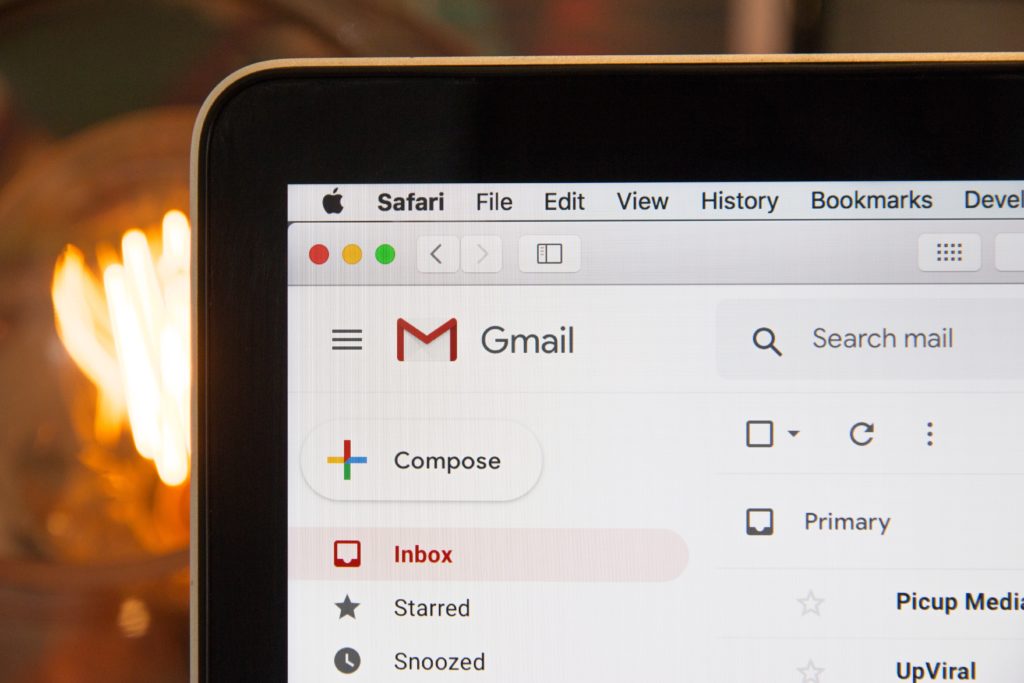
Email marketing campaigns are one of the most cost-effective marketing tools. You can send out an email blast on your own for free. Or you can use an email automation website for a reasonable price.
What these emails contain is entirely up to you.
You might choose to include videos, images, or links to new products or new articles.
They can hold information about upcoming events like a conference your company is holding, or if you’re a retail company, maybe there’s a big clearance event happening soon.
Email Marketing Best Practices
Before you dive head first into an email marketing campaign, take note of the best practices for email marketing.
Neil Patel provides an inside look on email marketing best practices:
Obtain Permission
First and foremost, you should never overlook getting permission from the people you email. Don’t ignore opt-outs and be considerate of your customers wishes. This is arguably one of the most important and best practices of email marketing.
There is nothing worse than receiving email after email from companies you don’t want emails from. Nobody likes having an inbox full of junk.
Furthermore, you don’t want to build a negative perception of your brand by simply neglecting to obtain permission.
A good way to gather both email addresses and permission to use them is through offering some form of giveaway in which the customer must enter their email to receive something or to be entered into a contest. It’s a win-win situation.
Establish Goals
Make a list of goals you want to accomplish with your email marketing campaign. Essentially, this will inspire and fuel the calls to action you provide for your customers.
Maybe you want to get new customers, sell more items to existing customers, or re-engage inactive customers.
Having a clear path and plan for your email marketing campaign will help you create valuable content, determine the correct audience segment, and stay on track.
Build a Segmented Subscriber List
With your goal in mind, make a list of the people you want to send this email to. You might consider segmenting your list in order to obtain higher click-through rates and to decrease the chances of your emails being sent to spam.
Sending personalized messages via segmented subscriber lists was one of the most effective email strategies of 2017 according to the Data and Marketing Association.
Segment subscriber lists based on demographics like age, location, gender, company position, education level, etc.
Lists can also be segmented by customer level of engagement, life cycle stage, past purchases, amount spent, time since last purchase, etc. For more details and suggestions on segmenting lists see Neil Patel’s “10 Quick and Easy Email Marketing Segmentation Strategies to Try Today” or HubSpot’s “30 Ways to Slice Your Email Database for Better Email List Segmentation.”
Create Valuable Content
Don’t forget to provide value for your customers when you email them. They are allowing you to personally reach out to them, so don’t do anything to jeopardize that.
Ways to provide value for your customers:
- Important updates, news, or information
- Giveaways
- Videos
- Blogs
- Tips and tricks
- Sales, clearances, or promotions
Center your emails around information that is beneficial to your customer. Focus on their needs and wants, and always provide a distinct value for them. Also, keep in mind that the content you share should help you achieve your email marketing campaign goals.
Leighton Interactive advises, “Keep them informed on new services, products, and company updates. Send them helpful hints and tie it back to how your company can assist. Remember it’s more expensive to bring in a new customer than to retain a current one.”
Check out this list made by HubSpot of examples of lead nurturing emails.
Keep your subscribers up-to-date and wanting more with enticing exclusives, or reach out to them if they haven’t visited the site or purchased anything recently.
Create something new and exciting for your email subscribers to engage with!
Measure Results

Measuring results is one of the best practices for email marketing because it allows you to perfect and refine your art. It allows you to see how far you’ve come and determine what worked and what didn’t.
Opt-in Monster provides a list of nine important email marketing metrics to measure (along with the formulas for calculating them):
- Open rate: total opens / emails delivered
- Click through rate: total clicks / emails delivered
- Unsubscribe rate: total unsubscribes / emails delivered
- Complaint rate: total complaints / emails delivered
- Conversion rate: (total conversions / emails delivered) X 100
- Bounce rate: (total bounces / emails sent) X 100
- Forward/share rate: (total forwards / emails delivered) X 100
- Campaign ROI: [($ sales – $ invested) / $ invested] X 100
- List growth rate: [new subscribes – (unsubscribers + complaints) / total subscribers] X 100
Don’t be afraid to make changes to any component of your email marketing campaign if the data is telling you the changes are necessary.
Design Responsive Displays
Customers are becoming more and more inclined to use their mobile devices for just about everything. Which means you should optimize your emails for desktop and mobile.
According to Campaign Monitor, “Mobile email client usage is soon set to eclipse both that of webmail and desktop clients, meaning that providing a less-than-optimal reading experience on the small screen may not only inconvenience a few recipients, but eventually the majority.”
Email Monday provides another helpful graph, proving that people are viewing their emails on a variety of screens:
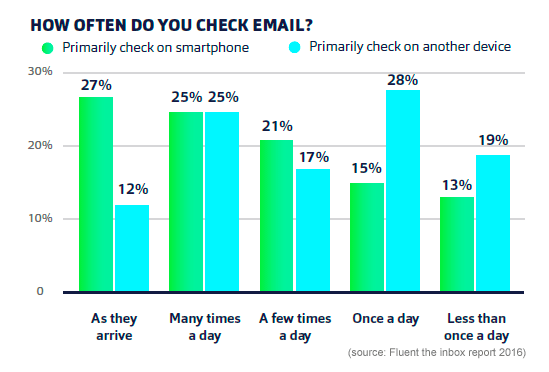
Essentially, your job is to cater to your customers. If there is anything you can do to make their lives easier…you should do it.
Click here to check out Hubspot’s “19 Examples of Brilliant Email Marketing Campaigns” to learn more email marketing best practices!
The Best Email Marketing Software
Below you will find the best email marketing software. There are plenty of third-party email marketing applications out there to help you refine your campaigns.
Classroom Application
As you can see, email marketing isn’t going away anytime soon. It is a necessary component of any marketing plan and can help companies generate leads, increase conversions, and build awareness.
But, teaching students how to run an email marketing campaign isn’t a simple task. As trends in technology and audience preferences change over time, keeping your class up-to-date can seem impossible.
If you’re wondering how you can apply this information in your classroom, you can try:
- Having your students draft a marketing email for one of their favorite products based upon the statistics and suggestions in this article
- Assigning students a larger project in which they must create an email workflow for a specific product, consisting of a series of marketing emails that each provide the customer with unique value
- Using Mimic Pro to simulate a realistic email marketing campaign experience for your students
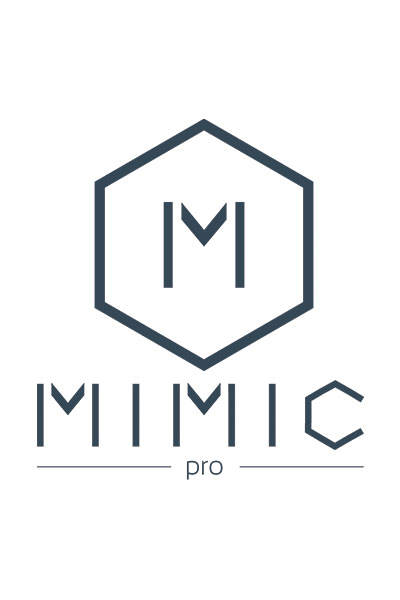
Mimic Pro can provide your students with real, hands-on learning in all things digital marketing. There are specific scenarios that require students to run an email marketing campaign for Kent’s Camera Castle, a hypothetical company.
Request free instructor access to Mimic Pro.
For additional help and resources, request free instructor access to Digital Marketing Essentials. It covers all the primary digital marketing disciplines in one textbook.
Email Marketing Campaigns are Alive and Well
Although trends in marketing continue to progress and change, email marketing campaigns remain one of the most effective marketing tools.
You must know your audience, goals, and strategies before diving into an email campaign.
Not to worry, there are plenty of tools and software options available that can help you create, send, and analyze your marketing emails, but it is still your job to create valuable content for your viewers.
So what are you waiting for? Get started on your email marketing campaign today!
